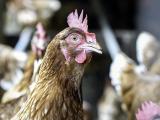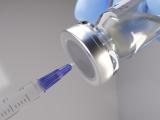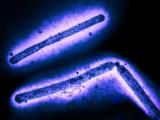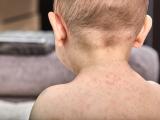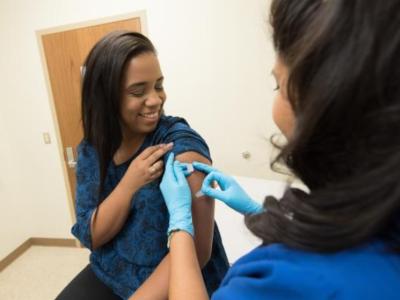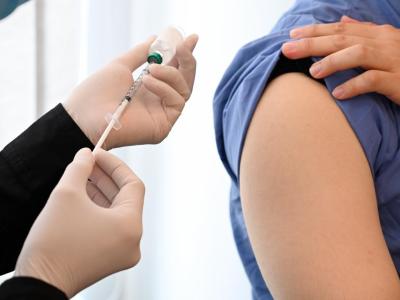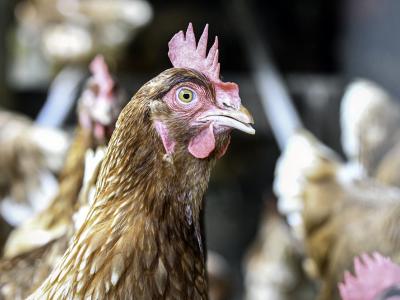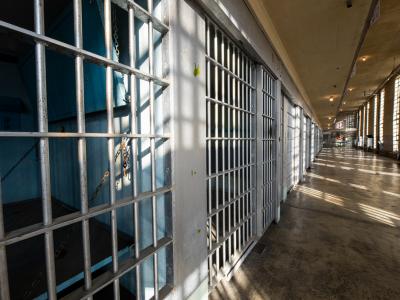Mar 5, 2012 (CIDRAP News) – A US congressman has stepped into the debate over two controversial H5N1 transmission studies, asking President Obama's science office why a federal advisory board didn't consider dual-use issues until after the experiments were completed and what safeguards are in place.
The letter from Rep Jim Sensenbrenner, R-Wisc., was sent on Mar 1 to John Holdren, PhD, who leads the White House Office of Science and Technology Policy. It was released a day after the National Institutes of Health (NIH) asked the National Science Advisory Board for Biosecurity (NSABB) to reconvene to reexamine new details about the studies, according to a press release from Sensenbrenner's office.
Sensenbrenner is vice chairman of the House Committee on Science, Space, and Technology.
At a Feb 29 panel discussion hosted by the American Society for Microbiology (ASM), Anthony Fauci, MD, director of NIH's National Institute of Allergy and Infectious Diseases (NIAID) revealed that the NSABB was asked to review new and clarified data that arose at a Feb 16-17 closed-door meeting of mostly flu researchers held at World Health Organization (WHO) headquarters in Geneva.
Comments made at the ASM panel discussion by Ron Fouchier, PhD, lead author of one of the studies, appeared to offer some clarification, but his comments have led to more questions among experts and others who have closely followed the events.
During the ASM panel, Fouchier said the lab-modified H5N1 wasn't highly lethal after airborne spread among ferrets, though it was deadly when inoculated in high doses into the lower respiratory tract of the animals.
In his letter, Sensenbrenner questioned whether enough precautions were in place to protect Americans against biological attacks and said there has to be a balance between national security and the free flow of scientific information.
"An ad hoc system that selectively identifies dangerous research only after it was completed is insufficient," he said. "I hope Dr Holdren will provide insight into how the US will effectively balance these priorities moving forward."
He said the government appears to be sending a mixed message about bioterror threats, with Secretary of State Hillary Clinton warning about the risks in December 2011, while federal officials from another department have funded research that has raised bioterror concerns. In the letter, Sensenbrenner said the issues raise questions about why the research was conducted at all. "At a time when malevolent actors are actively seeking biological weapons of mass destruction, scientists have succeeded in creating an organism that we have all prayed nature would not."
Sensenbrenner told Holdren that the NIH's request that the NSABB reconsider its recommendation only adds to the confusion.
He asked Holdren to respond to a set of questions by Mar 31, covering how the NSABB weighs dual-use research risks and benefits, what systems are in place to flag early-stage dual-use research, what the government's current system is for communicating results of legitimate dual-use research, and why the NIH didn't indentify the H5N1 research until it was completed and submitted for publication.
Amanda Infield, a press officer with Sensenbrenner's office, told CIDRAP News that the Sensenbrenner will wait to hear back from Holdren's office and review the response before determining if more Congressional action is needed.
She emphasized that the main point of the letter is to ensure that the government has an appropriate and comprehensive policy regarding dual-use research.
Fouchier's presentation on his group's research during the ASM panel has experts and observers questioning what the clarifications presented to the WHO meeting were and if his findings are consistent with his first public comments about the work at a conference last September in Malta. During the ASM panel, Fouchier said the media coverage of the research has led to misinterpretations about the findings, especially about the transmissibility and lethality of the virus.
Debora MacKenzie, the New Scientist writer who heard Fouchier present on his group's findings at the Malta meeting and was the first to report on the issue, wrote in a Mar 2 follow-up that Fouchier's comments at the ASM meeting seem consistent with what she heard in Malta.
"Nothing in his talk contradicts the story I heard in Malta," she wrote, "although it may refute some of the more hysterical interpretations of it. You just have to listen carefully."
Fouchier's group found that the lab-modified H5N1 strain wasn't lethal to ferrets that got sick airborne transmission, and it wasn't very lethal when large doses of the mutated virus were put up the animal's noses, she wrote. However, a wild-type H5N1 virus was lethal in ferrets inoculated through their noses, she added, noting that the scientists were surprised by the finding, because ferrets don't typically get sick from the wild-type virus.
Fouchier said the wild-type and mutant transmissible viruses were both deadly when put in the ferrets' windpipes, a model of infection in humans, a finding that he had explained earlier at the Malta meeting, according to MacKenzie.
Meanwhile, Vincent Racaniello, PhD, a virologist at Columbia University, reviewed in a Mar 1 Virology Blog post the clarifications Fouchier shared during the ASM panel. He asserted that Fouchier's data are at odds with NSABB conclusions and don't appear to be consistent with his earlier statements in a September 2011 New Scientist story by MacKenzie.
He said the earlier New Scientist story said Fouchier's group found that five mutations in two genes allowed the virus to spread between lab animals and that the virus was just as lethal. Racaniello added that the information was in direct contrast to what was presented during the ASM panel. The earlier report also described passage of H5N1 ferrets, the 10th round of which spread to those in separate cages and killed them, he said, noting that the information appears to contradict Fouchier's earlier explanation.
Racaniello suggested that the results Fouchier reported at the ASM meeting might relate to experiments involving five specific mutations he mentioned earlier.
Meanwhile, ScienceInsider, the online news service of Science, contacted several NSABB members to ask if Fouchier's clarifications might prompt the group to change its recommendation. The report quoted seven of the members, several of whom emphasized that they weren't speaking for the whole board.
A number of NSABB members said the enhanced transmissibility was still a big concern. Susan Ehrlich, a retired judge and adjunct professor with the Department of Microbiology and Immunology at the University of Texas Medical Branch, Galveston, told ScienceInsider, "The larger issue is that of transmissibility. H5N1 admittedly is a dangerous virus, and now has been made more so. Its host range was extended."
The New York Times, in a Mar 3 editorial, called confusion over Fouchier's characterization of the lab-modified virus "the latest bizarre twist in a global health debate that badly needs an objective, independent arbiter."
The Times' editorial board said it welcomed a new appraisal from the NSABB and said it hopes the board also weighs in on what safety precautions are needed to prevent the virus from escaping and whether work with the virus should proceed or be halted.
"These issues need to be resolved by experts who do not have institutional biases or turf to protect," the Times said, nothing that the WHO is in the best position to address the issue, as long as it includes a broader group of experts and interested parties. "It must ensure that these forums are not rubber stamps for what the narrower special-interest group just concluded."
"These are complicated issues and the stakes are enormous," the Times wrote. "Government and scientists have a clear responsibility to get this judgment and future efforts right."
See also:
Mar 1 Rep Jim Sensenbrenner press release
Mar 2 New Scientist report
Mar 1 Virology blog post
Sep 26, 2011, New Scientist report
Mar 2 ScienceInsider story
Mar 3 New York Times editorial
Feb 29 CIDRAP News story "With new data, NSABB may revisit H5N1 studies"
